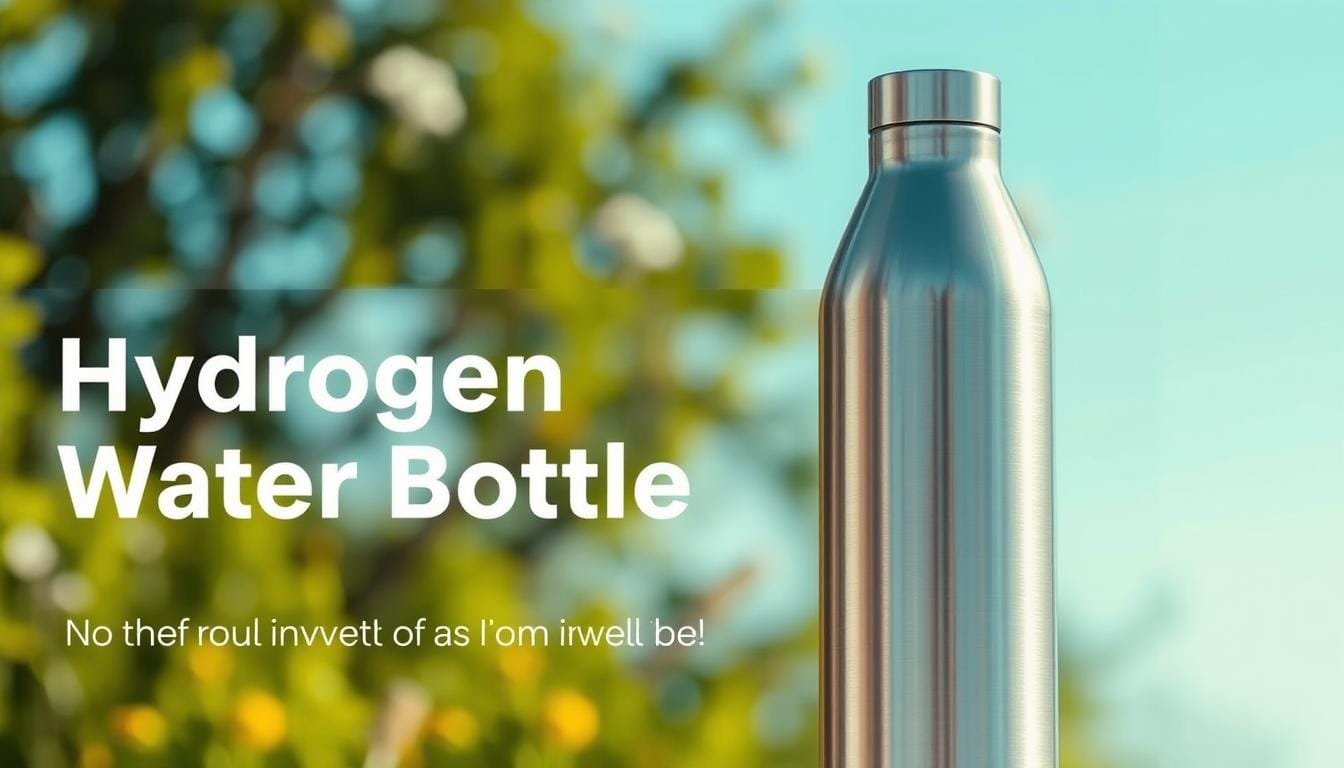Currently Empty: RM0.00
Can a small portable device really change recovery for gym-goers and busy professionals? That question trips into common claims and real science. The topic has grabbed attention from athletes and wellness fans in Malaysia who want smooth hydration and faster recovery.
Reviews note intriguing anecdotes but also inconsistent specs. Some devices promise high H2 levels but fail to list verified ppm or warranty details. Research shows short, steady intake helped trained athletes in certain studies, yet broader science remains cautious.
Practical factors matter: how a device infuses H2, how fast the drink must be consumed, and how consistently the product performs day to day. Device design, membrane type, charging and cleaning affect real-life use and cost.
Wellness Concept offers local guidance and stock updates across Malaysia. Contact via WhatsApp +60123822655 for hands-on advice. Business hours run Monday–Friday 9:30 am–6:30 pm and weekends 10 am–5 pm.
Key Takeaways
- Some studies show benefits for trained athletes after short, continuous intake.
- Device specs, verified ppm and fast consumption after infusion matter most.
- Products vary widely in consistency, membranes, and warranty transparency.
- Consider cost, portability, cleaning and verified H2 concentration before buying.
- Wellness Concept can advise Malaysians via WhatsApp and local support.
Quick take: hydrogen water bottle is it worth it for Malaysians right now
For Malaysians weighing a purchase now, practical performance and time matter more than bold marketing. Short trials showed better anaerobic results and lower fatigue for trained cyclists after seven days, and faster power and heart-rate recovery in rowers.
Experts warn the dissolved gas can escape fast, so the first two to three minutes after infusion are the sweet spot for drinking. That makes device design and real-world timing a top concern for users chasing recovery or improved performance.
Everyday users report smoother hydration and fewer afternoon energy dips, but results vary and are not guaranteed. Cost often balances out versus canned options if the unit is used daily and kept well maintained.
- Short verdict: a yes for conditioned athletes and high-stress professionals who will drink fast and maintain the unit; a cautious maybe for general wellness seekers.
- For local stock and tailored recommendations, message Wellness Concept on WhatsApp +60123822655. Business hours: Mon–Fri 9:30 am–6:30 pm; Sat–Sun 10 am–5 pm.
How hydrogen water bottles work, according to science and device design
An electric core, a membrane and tight seals shape how many tiny molecules make it into each serving. This section covers the main mechanics and why design choices matter for real-world performance.
Molecular hydrogen 101: from H2O to enriched drinking water
Molecular hydrogen forms when an electrolysis cell or a dissolvable tablet releases neutral H2 into the liquid. Those small molecules dissolve and create the mild stream of bubbles many users see.
Electrolysis, SPE/PEM tech, and why PEM matters versus hydrogen ions (H+)
PEM/SPE membranes are preferred because they favour H2 gas production rather than producing acidic H+ ions. That keeps pH stable and aligns the device with lab methods used in trials.
Why bubbles and timing matter: gas loss in the first 2–3 minutes
Bubbles signal dissolved gas but also warn that loss begins on opening. Drink fast after the cycle—about two to three minutes—to capture the highest concentration.
- Design quality—seals, venting and materials—affects retained levels.
- Clear ppm specs and battery reliability help buyers compare models.
- Self-cleaning features protect plates in mineral-rich local taps.
What the research says about potential benefits and limits
Clinical trials have tested whether daily intake can change markers tied to aging, metabolism and exercise recovery.
Oxidative stress has shown reductions in several small studies. Trials also report anti-inflammation trends that match users’ reports of easier post-workout days.
Performance and recovery signals
Week-long trials found improved anaerobic output in trained cyclists and faster power and heart-rate recovery in rowers. Results on blood lactate are mixed, so not every athlete sees the same gains in performance or recovery.
Metabolic markers and aging
Some studies noted lower blood sugar, triglycerides and cholesterol after repeated use. A longer trial reported modest telomere length benefits in older adults after six months.
Where evidence remains preliminary
Most trials are small and vary by device, dose and duration. Many use tablets or lab systems with declared ppm, while consumer units often lack verified concentrations.
| Outcome | Typical finding | Notes |
|---|---|---|
| Oxidative stress | Reduced markers | Selective antioxidant action reported |
| Exercise recovery | Faster heart-rate/power return | Best in trained groups |
| Metabolic markers | Lower glucose and lipids | Needs longer trials |
| Aging signals | Telomere preservation | Promising but limited samples |

Bottom line: research and studies are encouraging but not definitive. Malaysians should treat hydrogen water as a complementary tool while waiting for larger trials to confirm potential benefits.
Real-world use: taste, bubbles, and consistency issues reviewers report
Everyday testing shows that mouthfeel and bubble patterns shape whether people keep using these devices. Many users describe the drink as cleaner and slightly crisper. That change can make morning coffee or mid-run refuels feel smoother.
Anecdotal wins:
- Some athletes felt fresher during heavy training weeks and reported better recovery the next day.
- Families note the fizz attracts kids and nudges higher daily intake.
- Perceived smoothness may encourage consistent use, which matters for routines and stress management.
Device caveats:
- Several reviewers saw inconsistent bubbles after a few weeks of regular use, suggesting quality varies by brand.
- Proprietary charging pins create downtime if cords are lost.
- Unclear instructions and missing ppm specs make it hard to match study conditions.
- Limited warranties increase purchase risk for daily users who expect reliable performance.
| Issue | User impact | Practical tip |
|---|---|---|
| Inconsistent bubble production | Lower perceived concentration after weeks | Choose brands with local support and clear reviews |
| Proprietary charger | Downtime if lost or damaged | Keep a spare or prefer USB-C models |
| Poor instructions/ppm transparency | Hard to confirm dose and timing | Look for verified specs before buying |
Cost, convenience, and sustainability trade-offs
Choosing between tablets, on-demand generators, and canned servings means balancing price, waste, and speed.
Upfront and ongoing costs matter. Pre-packaged drinks can run about $36 for 12 cans, and some guides suggest three servings a day. That adds up fast and raises packaging waste in a country focused on reducing single-use plastics.
Ionizing units retail from roughly $50 to $300. The higher purchase price can pay off if they replace regular canned purchases. Maintenance—descaling, cleaning and charging—keeps performance steady.
Formats compared
- Ionizing units: higher upfront cost, lower monthly spend, zero single-use packaging when used with clean tap sources.
- Tablets: travel-friendly, simple dosing, often claim clear ppm numbers for each serving.
- Pre-packaged cans: ready to drink but costly over time and generate more waste.
Practical limits shape user experience. The short drinking window means users must sip immediately after the cycle to capture the highest concentration. For frequent gym-goers, a portable option can beat carrying multiple cans, while tablets work well as backups during flights or long days.
Local note: Malaysians should compare total monthly costs based on their habits and choose a mix of formats to balance budget, convenience, and environmental goals.
Who might benefit most—and who may not
Evidence suggests gains appear when use matches clear routines and goals.
Best fit: Highly trained athletes and busy professionals under regular stress may notice subtle performance or recovery benefits. Short trials with trained cyclists and rowers showed improved outputs when intake was steady and timely.
Also consider: People managing inflammation-related concerns might try this as an adjunct to medical care and lifestyle changes. Consistent intake over days or weeks produced the effects reported in trials.

When regular options may suffice: For those who favour simple hydration and an antioxidant-rich diet, plain water may deliver most needs. Rapid loss of dissolved gas means anyone who cannot drink promptly after infusion will likely see little benefit.
- Test during training, not on race week, to judge personal response.
- Check PEM systems if acidity sensitivity is a concern.
- Consult a healthcare provider for medical conditions before adding new routines.
- Malaysians can trial a unit for a few weeks to assess real-world fit without major changes.
Buying guide in Malaysia: what to look for before you purchase
A smart purchase starts by checking lab-backed numbers and how the unit fits into everyday routines. This short guide helps shoppers match specs to real use in Malaysia.
Key specs to verify
PPM and third-party tests: prefer devices that publish verified ppm ranges from independent labs so buyers can compare to study conditions.
PEM/SPE membranes: experts recommend PEM tech to generate molecular hydrogen rather than producing H+ ions. That preserves neutral pH and aligns with research.
Materials and seals: choose BPA-free, food-grade materials with tight lids to reduce gas loss and extend lifespan.
Practical features that matter
- Self-cleaning or descaling: protects plates in mineral-rich local taps and keeps performance steady.
- Battery and charging: pick reliable cells, standard ports and clear indicators to avoid downtime between sessions.
- Portability: size, weight and compatibility with travel carry matters for gym and commute use.
Brands and formats to benchmark
Echo Flask earns mention for H2 tracking and clear readouts. Echo Flask appears in user tests for consistent traces.
H2 Life suits travelers with compact bases and swap-in adapters. Tablets and pouches remain valid alternates; tablets can list ppm (for example, some claim 12 ppm per serving).
“Verified concentration and quick drinking windows decide real results more than fancy extras.”
Final tip: check warranty, local stock and after-sales support. For brand comparisons, Malaysian availability and hands-on advice, contact Wellness Concept on WhatsApp +60123822655 during business hours (Mon–Fri 9:30 am–6:30 pm; Sat–Sun 10 am–5 pm).
Talk to Wellness Concept for tailored advice and current availability
For Malaysians who want clear specs and real-world advice, direct help from a local team speeds decisions.
Wellness Concept offers personalised checks on ppm, device consistency and quick-drink routines so buyers set realistic expectations.
WhatsApp +60123822655 for expert guidance on hydrogen water products in Malaysia
Message the team to compare models, formats and bundles. They can match a unit to your routine, budget, and goals.
Business hours
Monday–Friday: 9:30 am–6:30 pm. Saturday–Sunday: 10 am–5 pm.
- Get up-to-date availability, pricing and local warranty notes.
- Receive advice on PEM-based devices and quick-drink protocols to capture true benefits.
- Ask about maintenance, cleaning routines and accessories that extend life and reliability.
- Compare tablets, pouches and water bottles for travel, gym or office use in Malaysia.
- Discuss how this product might fit into a broader health plan rather than replace core habits.
“Personalised guidance reduces guesswork on ppm, maintenance, and realistic expectations.”
Conclusion
The summary prioritizes research-backed effects and real-life needs for athletes and busy professionals. Small trials link reduced oxidative stress and modest gains in performance and recovery when use is steady over weeks. Results on lactate vary and larger studies remain needed.
Practical note: choose PEM-based units with verified ppm claims, or use tablets and canned options when charging or timing is a problem. Brands such as Echo Flask and H2 Life appear in tests for consistent traces.
Bottom line: hydrogen-enriched water offers promising support, but it does not replace diet, sleep, or training. For Malaysia-specific advice, availability and after-sales help, message Wellness Concept on WhatsApp +60123822655 (Mon–Fri 9:30 am–6:30 pm; Sat–Sun 10 am–5 pm).
FAQ
What is the main idea behind the Wellness Concept product titled "Hydrogen Water Bottle Is It Worth It? Wellness Concept"?
The brief presents a consumer-focused review of drinking devices that infuse molecular hydrogen into plain drinking, aiming to explain how the tech works, summarize current research on oxidative stress and recovery, and outline practical buying advice for Malaysian shoppers.
Quick take: is a hydrogen-infusing device worth buying for Malaysians right now?
For some people the devices provide perceived benefits like easier recovery and a fresher taste, but the value depends on budget, training load, and willingness to follow use instructions. Those on tight budgets or who already eat an antioxidant-rich diet may prefer alternatives such as supplements or tablets.
How do these infusion devices work, according to science and device design?
Most units generate H2 gas by electrolysis using PEM or SPE membranes to separate gases and avoid chlorine byproducts. Proper membrane design matters because it helps deliver neutral gas rather than altering pH with excess hydrogen ions.
What does "Molecular hydrogen 101" mean for consumers?
It explains that molecular gas (H2) dissolves into drinking and provides selective antioxidant effects at a cellular level. The section clarifies how dissolved gas differs from dissolved minerals and why concentration (ppm) is a key spec to check.
Why does electrolysis method and membrane type matter?
Devices using PEM technology tend to produce purer dissolved gas with fewer ionic shifts in the liquid. That reduces taste changes and unwanted electrochemical byproducts compared with cheaper methods that lack membrane separation.
Why do bubbles and quick drinking matter after activation?
Dissolved molecular gas escapes rapidly; significant loss happens in the first two to three minutes. Users should follow manufacturer timing guidance to capture peak concentration before large bubbles form and gas dissipates.
What does research say about potential benefits and limits?
Small clinical trials and lab studies suggest selective antioxidant action, reduced markers of oxidative stress, and modest effects on inflammation in certain contexts. Results vary by dose, population, and study quality, so evidence is promising but not definitive.
Are there performance or recovery benefits supported by studies?
Some trials with cyclists, rowers, and mixed-athlete groups report reduced perceived fatigue and lactate responses, yet results are mixed. Benefits appear larger in high-intensity or prolonged efforts rather than casual exercise.
Can these drinks affect metabolic markers like blood sugar or cholesterol?
Early research shows potential for modest improvements in blood sugar regulation and markers linked to healthy aging, but larger, long-term studies are needed before making clinical claims.
Where is evidence still weak or preliminary?
Areas such as chronic disease prevention, long-term cognitive effects, and broad population benefits lack strong, replicated randomized controlled trials. Experts call for standardized dosing and longer follow-up.
What do reviewers say about taste, bubbles, and consistency?
Many users note a cleaner mouthfeel and subtle taste differences. However, reviewers also report inconsistent dissolved gas levels between fills, variable bubble formation, and occasional device quirks.
What device caveats should buyers watch for?
Common issues include variable H2 production, battery life, charger compatibility, and limited warranties. Buyers should check verified lab results and return policies before purchase.
How do costs compare: ionizing units, tablets, and pre-packaged drinks?
Upfront costs for portable generators are highest but offer low per-use waste. Tablets are cheaper initially and convenient, while pre-packaged options cost more over time and generate single-use packaging.
What are the daily-use trade-offs for convenience and sustainability?
Rechargeable devices reduce packaging waste but require charging and time-to-drink discipline. Tablets are portable and affordable but add recurring purchase and packaging considerations.
Who is most likely to benefit from using these devices?
Highly trained athletes, shift workers, and people managing high oxidative stress may see the greatest gains. Those with mild training routines or already consuming antioxidant-rich diets may gain little extra.
When might regular drinking and diet be enough?
For most casual exercisers and people focused on general wellness, plain drinking plus a diet rich in fruits, vegetables, and polyphenols provides robust antioxidant support without extra devices.
What specs should Malaysian buyers check before purchasing?
Look for verified dissolved-gas concentration in ppm, PEM or SPE membrane tech, food-grade materials, and independent lab reports. Those specs indicate better performance and safety.
What practical features matter in daily use?
Seek devices with reliable batteries, easy cleaning or self-clean cycles, clear indicators of production status, and solid after-sales support for repairs or replacements.
Which brands and formats are useful benchmarks in Malaysia?
Popular options to compare include Echo Flask-style units, established H2 Life products, effervescent tablets, and single-serve pouches. Compare specs, lab verification, and warranties rather than marketing alone.
How can someone get tailored advice from Wellness Concept?
They can contact the team via WhatsApp at +60123822655 for product guidance, availability, and help choosing the right format for personal needs.
What are Wellness Concept’s business hours for inquiries?
Support is available Monday through Friday from 9:30 am to 6:30 pm, and Saturday–Sunday from 10 am to 5 pm.


